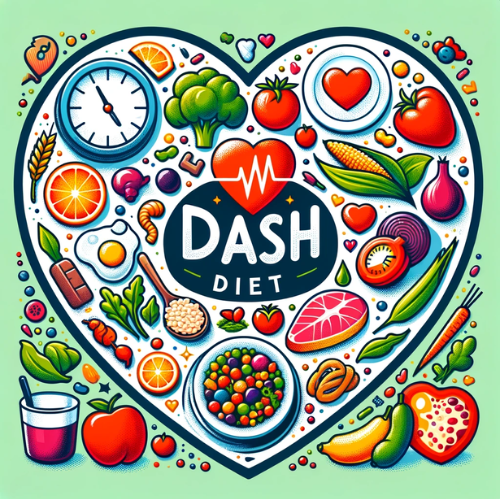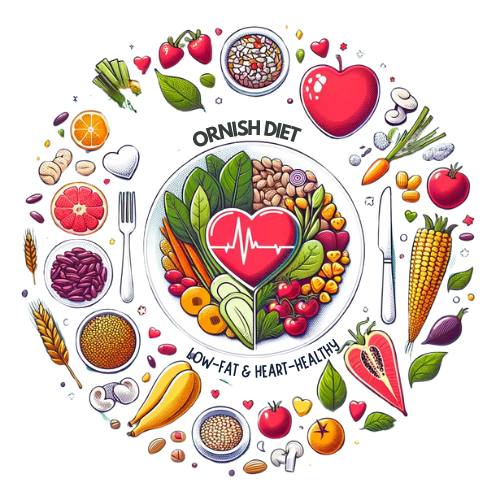Demystifying Popular Diets and Their Nutritional Foundations
In a world awash with dietary advice, popular diets stand out as beacons of hope for many looking to improve their health. However, with each diet championing a unique macronutrient ratio, understanding the roles of carbohydrates, fats, and proteins in nutrition becomes paramount. Evaluating diets on their nutritional content, adaptability, and diversity offers a roadmap to a healthier lifestyle.

The Mediterranean Diet: A Macro Perspective
Historical and Cultural Origins:
The Mediterranean Diet is steeped in the dietary traditions of countries like Greece and Italy. Its roots can be traced back to the mid-20th century, where lower rates of chronic diseases were observed in these regions, attributed to their diets.
Key Components:
This diet emphasizes healthy fats from olive oil, nuts, and seeds; ample carbohydrates from fruits, vegetables, and whole grains; and lean protein sources like fish and legumes. The balance of macronutrients supports heart health and longevity.
Health Benefits:
Scientific studies have consistently shown that the Mediterranean Diet reduces the risk of heart disease, stroke, and type 2 diabetes. It’s also associated with longer lifespan and better quality of life. A landmark study in the New England Journal of Medicine (Estruch et al., 2013) demonstrated that the Mediterranean Diet significantly reduces the risk of cardiovascular events.
“According to a comprehensive study by Estruch et al. (2013), published in the New England Journal of Medicine, adhering to a Mediterranean Diet supplemented with extra-virgin olive oil or nuts reduces the incidence of major cardiovascular events among individuals at high cardiovascular risk.”
Incorporation Tips:
Adopting the Mediterranean lifestyle means enjoying meals rich in plants, selecting fish over red meat, and valuing mealtime as a communal activity. The focus is on whole foods, minimal processing, and the enjoyment of eating.

DASH Diet: Strategic Eating for Heart Health
Defining the DASH Diet:
The DASH Diet targets hypertension reduction and is rich in fruits, vegetables, whole grains, and lean proteins. It limits saturated fats, trans fats, and cholesterol, focusing on nutrients that lower blood pressure.
Macronutrient Balance:
The diet balances carbohydrates from fruits and vegetables, proteins from dairy and lean meats, and healthy fats from seeds and nuts. This macronutrient mix supports cardiovascular health.
Scientific Findings:
Studies have validated the DASH Diet’s effectiveness in lowering high blood pressure and bad cholesterol, making it a potent tool against heart disease. The DASH study published by the National Heart, Lung, and Blood Institute (NHLBI) that provided the framework for the diet. This study highlighted the diet’s effectiveness in lowering blood pressure and LDL cholesterol (Sacks et al., 2001).
Practical Tips:
Sustainability comes from meal planning, incorporating a variety of nutrient-rich foods, and reducing sodium intake. The DASH Diet’s principles can be easily integrated into any lifestyle with minor adjustments.

Understanding the Ornish Diet: Low-Fat, Heart-Healthy Eating
Philosophy and Objectives:
The Ornish Diet, developed by Dr. Dean Ornish, focuses on reversing heart disease through a diet very low in fat. It emphasizes whole grains, fruits, and vegetables, with limited intake of fats and animal products.
Macronutrient Distribution:
This diet dramatically reduces fat consumption to 10% of daily calories, relying heavily on carbohydrates and moderate protein, mainly from plant sources. The low-fat approach is designed to improve heart health.
Research and Evidence:
Clinical trials have shown that the Ornish Diet can reverse heart disease and improve cholesterol levels. It’s one of the few diets with solid evidence supporting its cardiovascular benefits. Dr. Dean Ornish’s research, published in The Lancet (Ornish et al., 1990), found that the Ornish Diet could reverse coronary artery disease.
Challenges and Integration:
Adopting the Ornish Diet requires a significant reduction in fat intake, which can be challenging for many. It also emphasizes lifestyle changes like stress management and regular physical activity for comprehensive health improvement.

Exploring the Keto Diet: A Deep Dive into Fats and Proteins
Goals and Principles:
The Ketogenic Diet shifts the body’s metabolism towards burning fats for energy, through a drastic reduction in carbohydrates. It’s high in fats, moderate in proteins, and very low in carbs.
Macronutrient Manipulation:
By limiting carbs to about 5-10% of daily calories, the Keto Diet forces the body into ketosis, a state where fat becomes the primary energy source. This type of “fat” is commonly referred to as Brown Fat. This macronutrient ratio is starkly different from conventional diets.
Health Outcomes and Controversies:
While the Keto Diet has been praised for weight loss and blood sugar control, its long-term effects on heart health remain a topic of debate. Critics point to potential risks associated with high saturated fat intake. Further discussions regarding the controversy of Keto can be found in studies like the one in the Journal of the American College of Cardiology that states “While the Keto Diet has been praised for its weight loss efficacy, as demonstrated in a study by Volek et al. (2004) in Nutrition & Metabolism, critics caution against its high saturated fat intake, which some research, like Brehm et al. (2003) in the Journal of the American College of Cardiology, suggests could impact cardiovascular health.” On the flip side, other research indicates Ket’s potential benefits for weight loss and blood sugar control, such as the study published in Nutrition & Metabolism (Volek et al., 2004).
Adopting Keto with Caution:
Transitioning to a keto lifestyle involves careful planning to ensure nutritional adequacy and avoid potential health risks. It’s recommended to consult with healthcare professionals and consider a balanced approach to this high-fat diet.
Conclusion
From the heart-friendly fats of the Mediterranean Diet to the low-carb, high-fat regimen of the Keto Diet, understanding the nutritional underpinnings of popular diets is key to making informed health decisions. Tailoring a diet to individual health goals, nutritional needs, and personal preferences, while considering the balance of macronutrients, can pave the way to wellness. As the dietary landscape evolves, grounding choices in solid nutritional knowledge ensures that the path to health is both enjoyable and sustainable.


Hey Gary,
I just read your article, and I found it incredibly informative. As someone who practices Brazilian Jiu-Jitsu, I’m always looking for diets supporting my active lifestyle and rigorous training sessions. The detailed breakdown of the Mediterranean, DASH, Ornish, and Keto diets offers valuable insights into how different macronutrient distributions can affect overall health and wellness.
Given the physical demands of Brazilian Jiu-Jitsu, I’m particularly interested in how these diets could be adapted to support the energy requirements and recovery needs of high-intensity sports. Could you provide some guidance on how athletes in combat sports might adjust these popular diets to maintain peak performance while ensuring proper nutrition? Are there specific macronutrient ratios or modifications to these diets that you recommend for athletes in disciplines like Brazilian Jiu-Jitsu?
-Kyle
HI Kyle,
Thanks for your comments and questions I truly appreciate your interest and admire anyone that partakes in such demanding sports such as Jiu-Jitsu. The answers to your questions almost constitutes a complete article on the subject; however, I will try and condense the answers in a concise manner.
Adapting popular diets to meet the demands of high-intensity sports like Brazilian Jiu-Jitsu involves tweaking macronutrient distributions to fuel performance and recovery efficiently. Here’s a condensed guide on how to adjust these diets (I hope this helps):
Mediterranean Diet: Increase protein and complex carbohydrates while maintaining healthy fats. This adjustment supports muscle repair and provides sustained energy.DASH Diet: Amplify protein and carb intake, focusing on whole grains and lean proteins to meet the heightened energy and recovery needs.Ornish Diet: Modify by incorporating more protein and healthy fats, alongside complex carbs, to ensure energy levels are maintained without sacrificing heart health.Keto Diet: Consider a targeted or cyclical approach to introduce more carbs around training times, ensuring immediate energy needs are met and recovery is supported.
Generalized Macronutrient Ratio for High-Intensity Athletes:
A balanced approach of higher protein (20-30%), moderate to high carbohydrates (40-50%), and moderate fats (30-40%) is typically beneficial. This ratio can help in muscle repair, meeting energy requirements, and ensuring overall recovery.
Tailoring your diet to these macronutrient ratios while considering the specifics of each diet can help maintain peak performance and optimize nutrition in high-intensity disciplines. Remember, individual adjustments based on personal response and goals are key!!!
Best,
Gary
Gary, thank you for this comprehensive breakdown of popular diets and their nutritional foundations. I found your insights into the Mediterranean, DASH, Ornish, and Keto diets enlightening. As someone considering dietary changes, I have a few questions:
1. For the Mediterranean Diet, do you have any specific resources or meal plans that could help beginners get started on this lifestyle?
2. Regarding the DASH Diet, could you provide more guidance on how to reduce sodium intake while still maintaining flavor in meals?
3. With the Ornish Diet’s emphasis on low-fat consumption, are there any tips for incorporating enough healthy fats into one’s diet to meet nutritional needs?
Thank you for sharing your expertise on these diets and helping readers make informed decisions about their health.
Hello Kyle,
Thank you so much for your kind words and for reaching out with your thoughtful questions. I’m thrilled to hear that you found the article enlightening and that you’re considering making positive changes to your diet. It’s always exciting to embark on a journey towards better health and well-being, and I’m here to support you every step of the way.
Mediterranean Diet Resources: Starting with the Mediterranean diet is a wonderful choice! This diet emphasizes fruits, vegetables, whole grains, and healthy fats, and is known for its numerous health benefits, especially for heart health. A great resource for beginners is the “Oldways 4-Week Mediterranean Diet Menu Plan” book. It offers a practical introduction to the diet, with weekly menus and easy-to-follow recipes. Additionally, the Mediterranean Diet Foundation’s website provides a wealth of information, including meal plans and recipes that can help you get started. Incorporating simple swaps, like using olive oil instead of butter and increasing your intake of fish, can make a big difference.Reducing Sodium on the DASH Diet: The DASH diet focuses on lowering blood pressure and is indeed mindful of sodium intake. To maintain flavor while reducing sodium, try experimenting with a variety of herbs and spices. Fresh or dried herbs like basil, parsley, thyme, and oregano can add depth to your dishes without the need for salt. Additionally, garlic, onions, lemon juice, and vinegar can enhance the taste of your meals naturally. Be mindful of processed foods and read labels to choose lower-sodium versions of your favorites.Incorporating Healthy Fats on the Ornish Diet: Although the Ornish Diet is low in fat, it’s important to include healthy fats to ensure you’re meeting your nutritional needs. Avocados, nuts, and seeds are excellent sources of monounsaturated and polyunsaturated fats that can be incorporated into your diet in moderation. Additionally, using small amounts of olive oil for cooking or in dressings can provide the healthy fats your body needs. The key is focusing on the quality of fats rather than eliminating them entirely.
I hope these answers help you feel more equipped to navigate these dietary changes. Remember, the journey to better health is personal and unique to each individual. It’s about finding what works best for you and your lifestyle. I encourage you to consult with a healthcare provider or a dietitian to tailor these diets to your specific needs and health goals.
Thank you once again for your engaging questions, Kyle. I’m here to help and support you in your journey towards a healthier lifestyle. Wishing you the best of luck on your dietary journey!
Warm regards,
Gary
I am always concerned about diets because there are so many out there, however, you have touched on some key diets that are both quite different from each other one is plant-based while the other is fat-based and one seems more balanced. I have heard quite a lot about the keto diet and the impact that it creates for an individual. With all these different diets I know they affect a person do you know if there are specific ones recommended for body types?
Thank you for sharing your thoughts, Michelle! It’s completely understandable to feel overwhelmed by the myriad of diet options available today, each promising different benefits and based on distinct principles. The diversity in diets, from plant-based to fat-centric ones like keto, indeed caters to varied preferences and health goals.
The question of whether specific diets are recommended for different body types is insightful. While there’s ongoing research and debate in the nutrition community, the concept of tailoring diets to one’s unique physiological makeup is gaining attention. However, it’s essential to approach this idea with a balanced perspective. The effectiveness of a diet can depend on multiple factors, including an individual’s metabolic health, lifestyle, preferences, and, in some cases, their genetic makeup.
What’s most important is finding a diet that is sustainable, enjoyable, and meets your nutritional needs. This often means a diet that you can adhere to without feeling restricted, provides you with the necessary nutrients, and supports your overall health goals. Consulting with a healthcare provider or a registered dietitian can offer personalized insights into what might work best for your specific situation, considering your health status, preferences, and goals.
Your curiosity about how different diets affect individuals is a great starting point for discovering what works best for you. Remember, the journey to finding the right diet is personal and can take time, so be kind to yourself as you navigate through the options. Thank you for engaging with the article and for your thoughtful question!